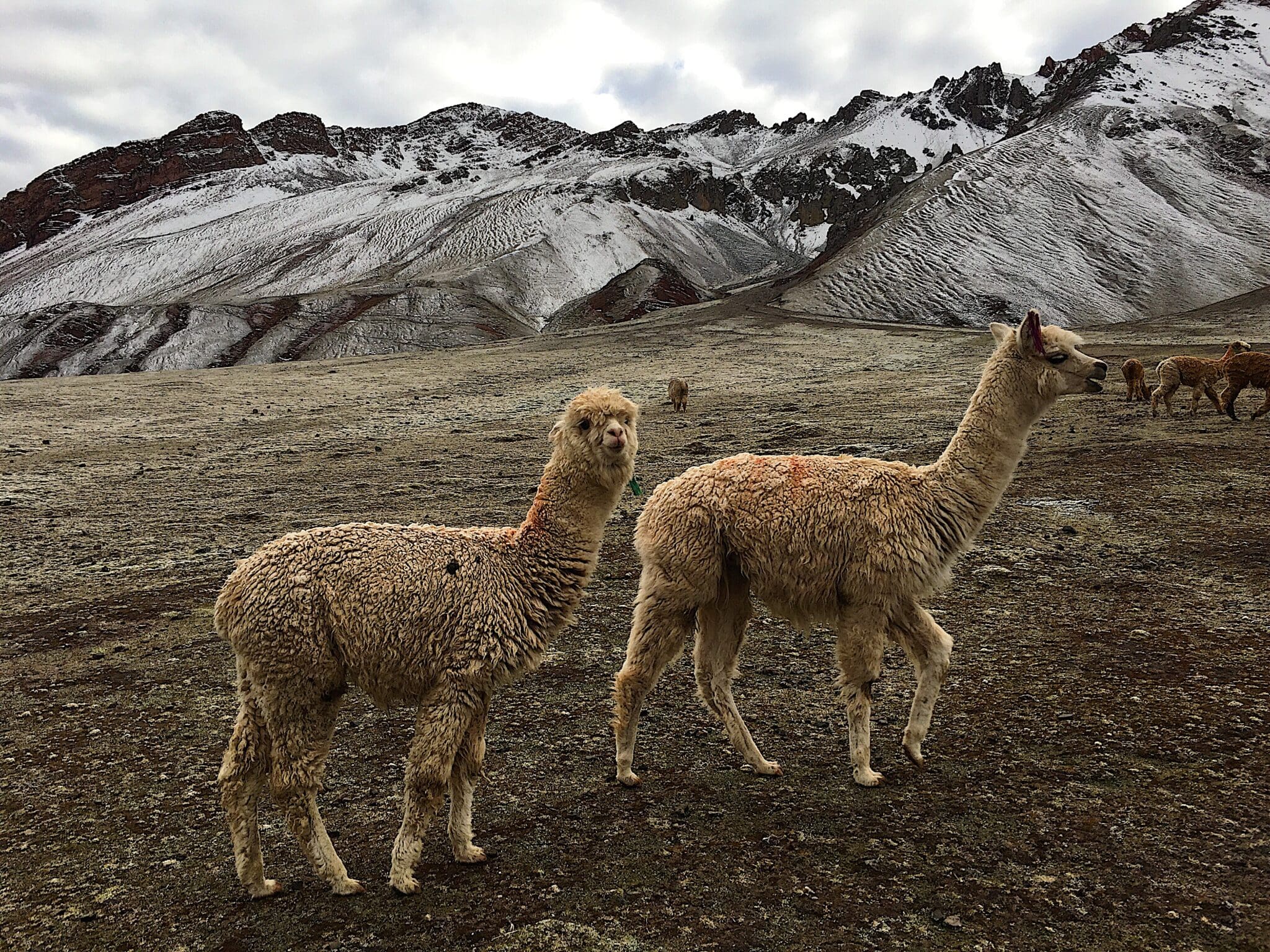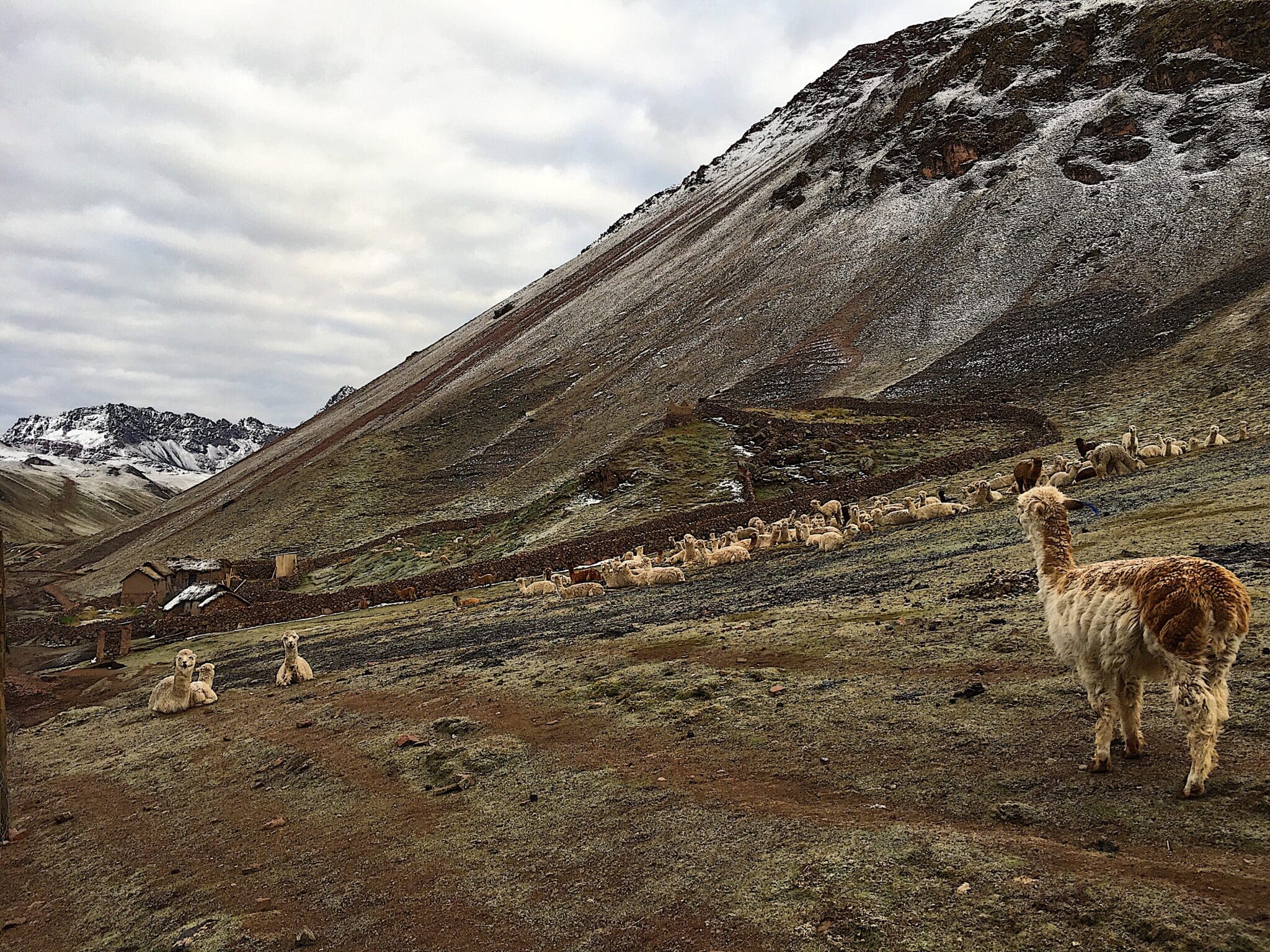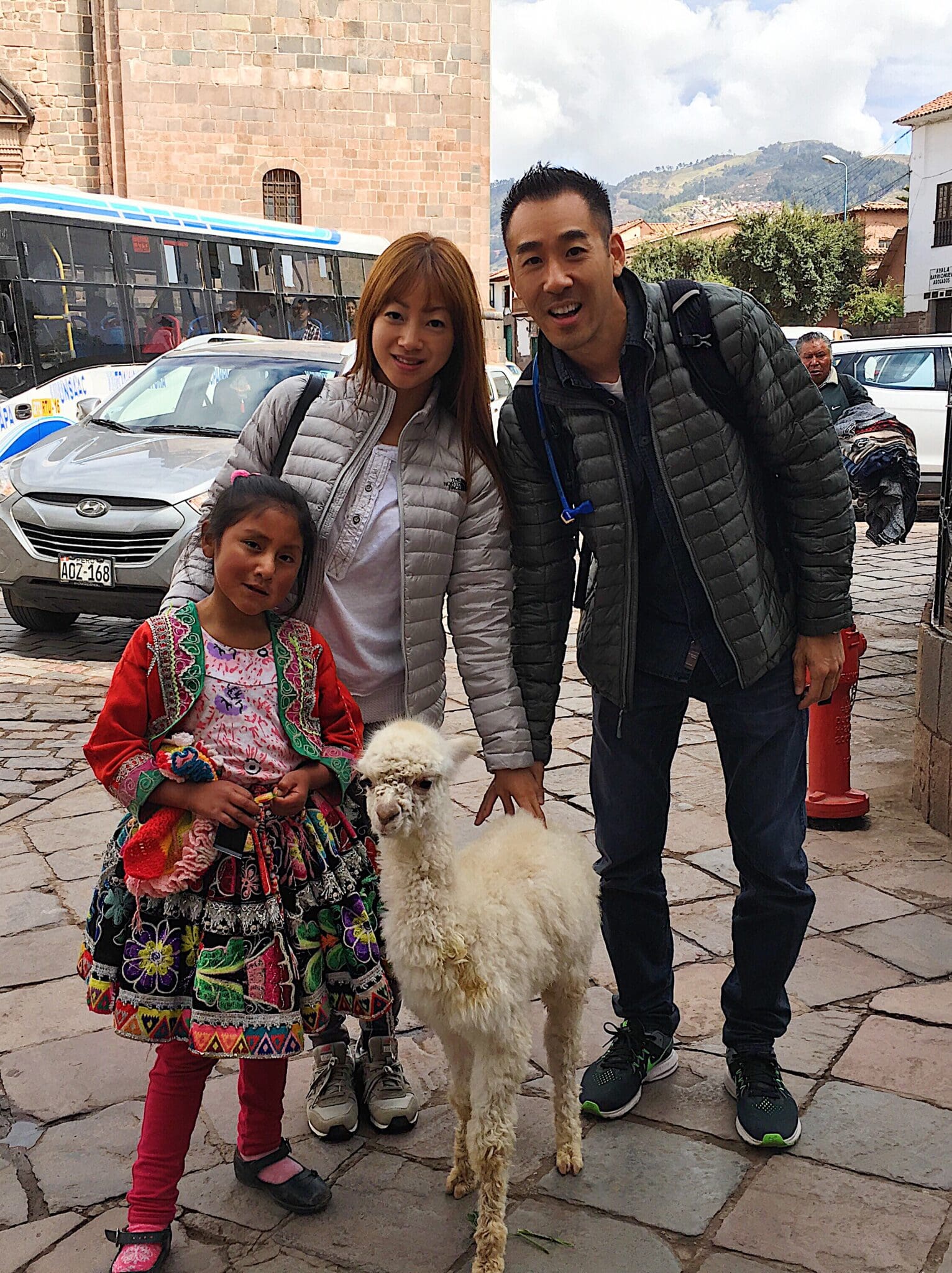A Guide to Peru’s Fluffy Friends: Llama & Alpaca
When planning for our Peru adventure, I was most excited for two main attractions: Machu Picchu (obviously!) & the llama/alpaca. Actually make that three.
There seems to be a world wide fascination surrounding these iconic South American creatures & I figured an informative post would be helpful for future travelers going to Peru. Just like the locals, llamas & alpacas are very photogenic & rank high on the Instagram ❤️ factor. In California, you can find alpaca petting farms to fulfill all your fluffy cuteness needs. You can even rent the animals as photo booth props for special events! (I am guilty of looking into this as an option for my own wedding!)
Oftentimes, people confuse the llama & the alpaca as the same. Although they both come from the camelid family, they are significantly different with their own unique features. Before you have your first close encounter, learn how to differentiate between the two species & impress the locals with your new found knowledge.

Differences Between the Llama & Alpaca:
Ears.
One of the main distinguishing features is the shape & length of the animals ears. While the llama has long, banana-shaped ears, the alpaca has shorter, spear-shaped ears.
Face.
The llama has a long, narrow face with little hair on their head. The alpaca, on the other hand, has a smaller face with a blunt nose. Their fuzzier faces also gives them their cute teddy bear look.
Hair.
Llamas have a coarse, shaggy outer coat that covers their finer inner coat. When left uncut, they can look like long, wiry dreadlocks. Their hair color tends to be uneven & can be a mix of varying colors.
Alpacas have fine, soft fleece that is similar to wool. At its fullest length, their dense wool resembles fluffy cotton balls. Alpaca hair is uniform in color & is available in 22 natural earth tone colors.
Size.
The llama is generally twice the size of the alpaca. Llamas can grow as tall as 3.5 to 5 feet & can weigh up to 400 lbs. Alpacas, on the other hand, grow up to an average of 3 feet & weigh around 100 to 175 lbs.

Personality.
Llamas are independent & overly confident animals. Their movements are somewhat aloof & not as graceful as its smaller cousin. The alpaca has a gentle, calm demeanor with a skittish disposition. Because of their greater intelligence, many locals train alpacas to keep as pets.
Both animals are distant cousins of the camel & are known to spit under threatening conditions. However, I can attest this rarely happens as I have invaded their spaces numerous times with my selfies & luckily have not been spit on!
Uses.
For over 5,000 years, llamas have been trained as reliable pack carriers with their ability to hold up to 30 percent of their own weight for several miles. Because of their hardiness, they are also trained as guard animals for small livestock, including the alpaca.
Alpacas, on the other hand, are solely bred for its fine, luxurious hair that is fast-growing & easily sheared. Its hair is lightweight, thermal, & hypo-allergenic making it a highly sought-out material in the textile industry. Unlike sheep wool, alpaca is much more soft to the touch & isn’t itchy against the skin. Its longer fibers are also more durable than cashmere & less likely to pill when worn.

How to Find Authentic Alpaca Goods
Peru is home to approximately 80% of the world’s alpaca population & its textile industry promises high quality products that benefit Andean herding communities. Buyer beware! There are several stores & market vendors that claim to sell authentic alpaca goods at ridiculously high prices. But before you lose yourself among the maze of souvenir stalls, I recommend first visiting the higher end stores to get a closer look at the hairs of their products. This will help you to recognize the differences in the fabrics as well as provide a better price comparison.
At the marketplaces, take some time to thoroughly inspect the item up to the light. If the alpaca is warm or there are sparkly threads intertwined within the fabric, it may likely be mixed with synthetic materials. Also check for any stitching inside, since garments made from 100% pure alpaca should not have sewn seams. Remember that real alpaca come in earth tone colors, so those brightly dyed “alpaca” goods are guaranteed to be a blend of other materials.
Lastly, consider the prices at the markets as you would not expect to find cheap authentic alpaca. To get a better gauge on the pricing, a pure alpaca sweater would cost on average 60 to 80 USD. A blended alpaca sweater can cost as low as 10 USD.
Baby Alpaca
You may come across goods marked as “baby alpaca.” Keep in mind that this is not what its name suggests & is not from a newborn. Rather it is made of the alpaca’s first shearing & is usually from the soft underside of the neck & belly. Be cautious as some producers may mix the expensive baby alpaca with other fibers to sell their products at a marked down price.

Support the Local Businesses in Peru
Llamas & alpacas are both highly regarded as important sources of income for the Andean people. Unfortunately, the indigenous farmers are paid very little for their alpaca wool. Same applies to the tour guides who charge travelers a small fee to utilize their llamas as transporters during their multiple-day hikes. Most often, the hard labor of the locals go uncompensated & as tourists, we should be mindful of where our money goes when purchasing their goods or services.
In more recent years, the global climate change has created another challenge for the locals. Thousands of llamas & alpacas are dying off due to unusual cold winters bringing in extreme levels of rain & snow. The summer seasons have been scorching with high temperatures that result in droughts destroying essential vegetation & water resources.
The Nuñoa Project was created to bring awareness for the protection of the dwindling camelid population & to support the welfare of the herding communities in Peru. The program provides education for farmers, students, & veterinarians in Peru as well as other countries in hopes of preserving the Andean traditional ways of living. Donations go towards research for more effective breeding practices & methods for improving disease prevention. The project also helps locate people who are willing to pay a better price for the locals’ goods.


Leave a comment